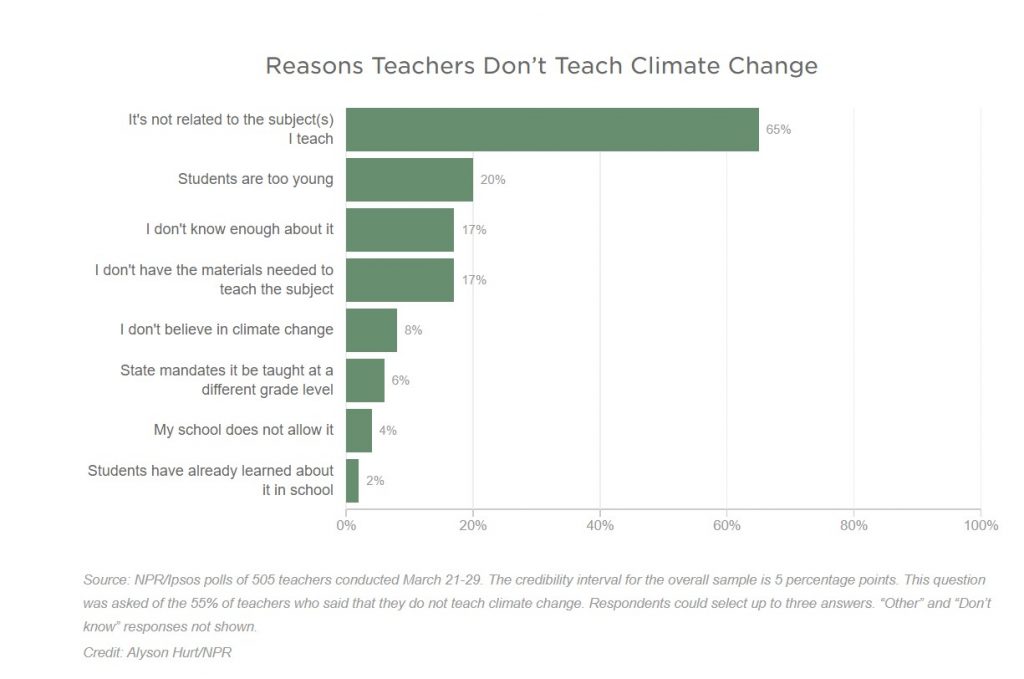Millie (Year 13) explores issues surrounding food production and climate change.
If we look at the UK today, there has never been a wider range of exotic foods in our supermarkets and restaurants. In Western society, we are now able to access an unprecedented choice of fruits and vegetables. Just a few decades ago, no one could ever have dreamed of picking up a pineapple that was grown thousands of miles away at their local shops. Globalization has given consumers huge choices. But what does this mean for our environment, given current consumer demand in the United Kingdom?
Food and carbon in the UK
The food industry makes up 20% of the UK’s carbon footprint (Carasso et al, 2015), with the fruit and vegetable industries accounting for 10-12.5% of total food-related emissions (Garnett, 2006). This sector emits a small but significant part of our overall carbon dioxide emissions. The average person in the United Kingdom emits 15 tonnes of carbon per year, and this needs to be reduced by at least a third to be on the way to reducing the UK’s carbon footprint (Berners-Lee, 2019).
Food could be one of the ways to do this, as something we consume every day. It is important to consider the whole fruit and vegetable supply chain and where the largest carbon savings can be made. It appears that consumer behaviour is the most important factor, followed by transport, waste, agriculture, technology, energy usage, resources, and finally, processing and packaging. A safe and extensive new food system is needed for the production and distribution of fruits and vegetables and there are so many changes which could be made in each stage of the food system. It will be difficult to achieve a universal solution but making changes in all the different areas in the industry will eventually benefit the environment greatly.
Consumer behaviour
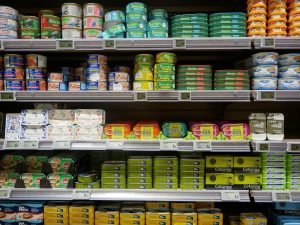
Consumer behaviour is the most important factor in reducing emissions, as it underpins all the other areas of the industry. Consumer demand influences what products are brought to the shelves and the supply chains and processes that are used, so we have the opportunity as citizens to reduce the carbon dioxide emissions of this industry. Consumers being aware of the environmental credentials of different food products is key to reducing emissions, as they can then make informed decisions about what fruit and vegetable supply chains they will support. According to Berners-Lee (2010), asparagus contributes to 125g CO2e for a local and seasonal pack but that same pack, flown from Peru to the UK in January, creates a massive 3.5kg CO2e. In this way, by being educated further and choosing more sustainable products, we can change the carbon footprint of this sector. It is difficult to change consumer behaviour, but it links all the factors together, and changing what the customer demands will change what the supermarkets supply. If we all work together, a big reduction in carbon dioxide emissions could be made.
Transport
Transport is one of the key contributors to the overall carbon emissions of the fruit and vegetable industry, and the next most important factor in lowering carbon dioxide emissions. Imports are a huge industry in the UK due to our temperate climate that can only grow a limited variety of crops. As summarized by the EU Fruit and Vegetables Regime: Producer Organisations (2017, p.5.), ‘Fruit and vegetables are by far the greatest source of imports in the UK food system’, making up 25.5%, with 15% of vegetables being imported and 62% of the fruits we consume (Garnett, 2006).
The UK becoming more self-sufficient would reduce the volume of imports needed, reducing transport emissions, so growing more of our own crops would really benefit the environment in most cases. This may require a change in consumer demand, however, to be viable, with the UK’s temperate climate. Reducing plane travel through changes in demand to less perishable goods is also really important, as the most carbon-intensive mode of transport, releasing 4.59kg of carbon dioxide per pound of goods (Berners-Lee, 2010). Increasing shipping and driving from abroad would also be very effective in reducing carbon emissions, despite some exceptions. Retailers could also be encouraged to source their items from places where more environmentally friendly transport methods are used, and this would be another useful way to lower the sector’s carbon footprint. Therefore, transport is really important in this climate battle, and a lot of changes could be made here, although there are challenges.
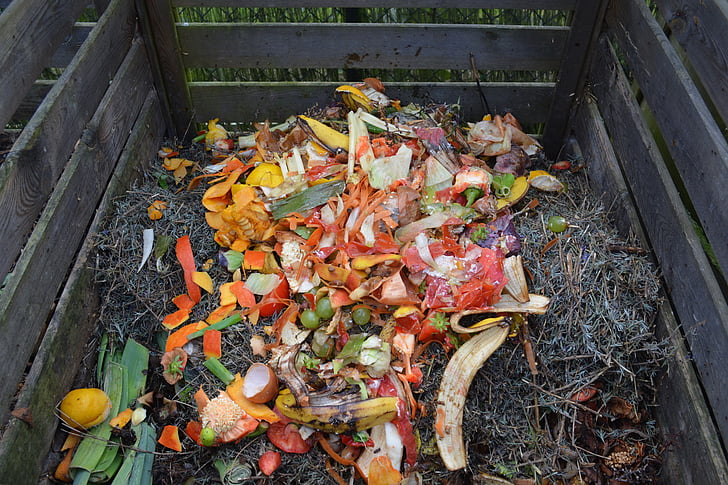
Waste not, want not…
Waste is another really important area in emissions reduction, as currently, one third of the food we produce is wasted (Royte, 2014), creating needless carbon dioxide emissions, and a 50% reduction in food waste could be achieved by 2030 compared to what it was in 2010 (Rothamsted Research, 2016) through various methods. Increasing awareness of waste and how it could be reduced along every stage of the food supply chain is vital, such as the modification of consumer expectation and the sale of fruits and vegetables which would have been wasted, such as the wonky fruits scheme.
Restaurants could also introduce more takeaway boxes, portion size choices and self-service to lower the volume of wasted food. There are many innovative solutions to this waste crisis, such as a new technology based on dynamic pricing created by the organisation Wasteless. Artificial intelligence is used to help retailers sell food that is perishable at the best price when it is near its ‘use-by’ date (Glover et al., 2020). Most shoppers reach to the back of the shelf, getting longer expiration dates so that shorter ones go to waste, according to David Cut, an employee at the company. The shorter expiration date could be made to look more attractive by lowering their price at the right moment to incentivise customers to buy that product over one with a longer expiration date. Therefore, waste is a really important factor in reducing emissions.
Agriculture

Agriculture is the next biggest area for emissions to be reduced in this sector. This could be done through better and more efficient land use, using clever planting methods which would allow more food to be grown in the same space. Soil carbon sequestration, taking carbon out of the atmosphere and storing it in the soil, is a very viable and useful way to take carbon out of the air, even though this technology is new and could foster our dependency on greenhouse gases. Methods like this have been cited as necessary to meet the goals of the Paris Climate Agreement by the Intergovernmental Panel on Climate Change (Amann et al., 2008).
Less deforestation is essential, as out of three and a half tonnes per person per year on average produced by the food we eat, deforestation accounts for two tonnes of it (Tolley, 2019). We need to increase the number of carbon sinks and reduce the volume of carbon dioxide in the atmosphere and less deforestation is needed to achieve this. I believe that building sustainable agriculture is key to achieving a reduction in emissions.
The use of technology
The use of technology in agriculture is the next most important way to reduce the carbon footprint of this sector, as it is critical in reducing the damage caused to the environment. Technology, globalization and marketing have changed recent attitudes towards food, as we need to start prioritizing the environment and safety over consumer demands and money. Genetic modification is a very controversial topic and, even though it could improve the environmental credentials of many foods, many people are opposed to it, seeing it as unnatural. According to Buller (2005), there is no long-term data concerning the safety of genetically modified foods, and it is not known how they affect health or the environment long term. However, it could be an incredible way to increase productivity of crops, make them more resistant to disease and different weather conditions, and reduce emissions in this way. Technology is really important in agriculture in the 21st century, as there have been so many scientific advancements in the last 40 years (Rothamsted Research, 2016) and it has many possibilities, but there are always limitations.
Driving efficiency
The energy consumption and efficiency of the food industry is the also really important in making changes to benefit the environment. So much energy is wasted in the production, storage and transport of foods. Protected horticulture requires a lot of energy, so fewer crops should be grown in this way, and instead in their suitable climate, but this may not be possible without food supply chains being changed drastically. For example, the environmental footprint for strawberry production in the UK is approximately 1.2 CO2 equivalent per kilogram whereas it is 0.35 in Spain (Gaillard et al, 2009). This shows that shorter transport distances don’t necessarily mean reduced carbon emissions, as foods could have been grown in hothouses, such as tomatoes in the UK, and actually those flown in from Spain have lower emissions as they grow well in the natural climate there without increased energy emissions.
Also, improvements in the crop growing efficiency of glasshouses would be beneficial, such as with better lighting, excess crops being used as fuel, and reducing machinery usage for less effect on the environment. This would ask a lot of farmers to change their whole lifestyle, but big changes are needed to create big reductions in greenhouse gas emissions. Increasing refrigeration efficiency would be very beneficial, with refrigeration used in all parts of the supply chain, but it could be hard to implement nationwide. Renewable energies are the future, and their usage is needed for a sustainable future across the food supply chain. According to Berners-Lee (2010), solar power is the best renewable source with a lot of potential, but it doesn’t currently contribute a lot to energy supplies. Fundamental societal change will be needed but changes in energy efficiency and consumption could reduce emissions greatly.
Use of pesticides and fertilizers

Resource usage in agriculture is another key factor contributing to the carbon dioxide emissions of this sector, including pesticides and fertilizers. If we use our resources wisely, we can live well and provide a life on this planet for future generations too. We need to use a smaller volume of resources but in a more efficient way to produce crops in a new production-consumption system, according to Rothamsted Research (2016). Fertilizers and pesticides are so useful to produce enough food for the planet, increasing crop yields and reducing the effect of pests so that more products can be sold. However, they are detrimental for the environment in their production and use, and their overuse can lead to pollution, worsening the effects on the environment. Fossil fuels are used to manufacture fertilizer, making up 12% of food’s contribution to greenhouse gas emissions (Berners-Lee, 2019) and pesticides can greatly harm the environment, impacting directly and indirectly on biodiversity as they kill many pests and other species as well (Murphy-Bokern et al, 2008). Therefore, their usage should be monitored and limited, in my opinion. They could be used with other more carbon-friendly methods, such as the use of manure and biological control, to increase productivity. The use of resources in agricultural production is therefore very important, and they need to be used in moderation.
Packaging
Improving the efficiency of the processing and packaging of fruits and vegetables could reduce emissions in this industry, although there are challenges. This is the method by which the least tonnes of emissions could be saved, but there still could be changes made. Processing food is a great way to greatly increase shelf life, reducing waste and its associated high emissions. Also, packaging provides valuable information and can help food to last longer, so less of it is wasted. Overall, not a lot of modifications could be made here to improve the environmental credentials. However, methods such as consumers bringing their own packaging like Tupperware could make a small difference in emissions for shops. Also, supermarkets could use more carbon friendly packaging. For example, one of the UK’s largest supermarkets, Waitrose, say that they started to reduce packaging in 2009. Karen Graley, who works in packaging at Waitrose said that ‘Within the next five years, we will make all our own brand-packaging widely recycled, reusable or home compostable’ (Duffy, 2019). Small but no substantial differences in emissions could be achieved by processing and packaging.

Final thoughts
If nothing is done, by the end of this century, post global warming, there will be environmental, social and economic degradation. We can avoid a looming food crisis by united actions. All factors need to be considered, especially consumer behaviour, and this can be changed through media and advertising in retailers across the UK. To feed a growing population with nutritious, delicious, low carbon food, there will be many challenges ahead but if everyone, including food policy makers, producers, farmers, retailers and consumers works to influence the others and changes their actions for a more sustainable world, we can restore our relationship with nature and live better than ever. Big differences will need to be made and although there will be many challenges and difficulties, I believe that the carbon dioxide emissions of the fruit and vegetable industry in the United Kingdom can be reduced significantly.
References
Amann, J., Bouallou, C., Gros-Bonnivard, R., Jaud, P., Kanniche, M., Valle-Marcos, J. (2008). Pre-combustion, post-combustion and oxy-combustion in thermal power plant for CO2 capture. Available: https://www.sciencedirect.com/science/article/abs/pii/S1359431109001471. Last accessed 12th June 2020.
Berners-Lee, M. (2010). How Bad are Bananas?: The Carbon Footprint of Everything. www.profilebooks.com. Last accessed 14th April 2020.
Berners-Lee, M. (2019). There Is No Planet B: A Handbook for the Make or Break Years. Cambridge University Press. Last accessed 14th April 2020.
Buller, L. (2005). The Eyewitness Guide To Food. DK Eyewitness UK. Last accessed 30th March 2020.
Carasso, N. and Fondation Daniel. (2015). Chapter 3. Food systems and greenhouse gas emissions. Available: https://foodsource.org.uk/sites/default/files/chapters/pdfs/foodsource_chapter_3.pdf. Last accessed 24th June 2020.
Duffy, N. (2019). Action Stations. Waitrose and Partners’ Food Magazine. Last accessed 3rd June 2020.
EU Fruit and Vegetables Regime: Producer Organisations. (2017). United Kingdom’s National Strategy for Sustainable Operational Programmes. Available: https://assets.publishing.service.gov.uk/government/uploads/system/uploads/attachment_data/file/665637/National_Strategy_final_Dec_2017.pdf. Last accessed 12th June 2020.
Gaillard, G, Dr., Mordini, M., Nemecek, T, Dr. (2009). Carbon and Water Footprint of Oranges and Strawberries A Literature Review. Available: https://saiplatform.org/uploads/Library/WG%20Fruit%20-%20ART%20Final%20Report.pdf. Last accessed 12th June 2020.
Garnett, T. (2006). Fruit and Vegetables & UK Greenhouse Gas Emissions: Exploring The Relationship. Available: https://www.fcrn.org.uk/sites/default/files/Fruitnveg_paper_2006.pdf. Last accessed 12th June 2020.
Glover, F., Milne, G., Smithern, A., Greenfield, R., Lemanski, B. (2020). Positive Thinking: Tackling Food Waste Podcast. Available: https://www.bbc.co.uk/programmes/m000cqd6. Last accessed 12th June 2020.
Murphy-Bokern, D. et al. (2008). Environmental impacts of the UK food economy with particular reference to WWF Priority Places and the North-east Atlantic. Available: http://assets.wwf.org.uk/downloads/environmentalimpacts_ukfoodconsumption.pdf. Last accessed 12th June 2020.
Rothamsted Research. (2016). Agricultural Transformation Pathways Initiative. Available: https://www.jstor.org/stable/resrep15873.6?Search=yes&resultItemClick=true&searchText=agricultural&searchText=transformation&searchText=pathways&searchText=initiative&searchUri=%2Faction%2FdoBasicSear. Last accessed 12th June 2020.
Royte, E. (2014). One-Third of Food Is Lost or Wasted: What Can Be Done. Available: https://www.nationalgeographic.com/news/2014/10/141013-food-waste-national-security-environment-science-ngfood/. Last accessed 12th June 2020.
Tolley, M. (2019). How to reduce your carbon footprint by 80% TEDxTelford Talk. Available: https://www.youtube.com/watch?v=6r06-dpRsEg. Last accessed 12th June 2020.


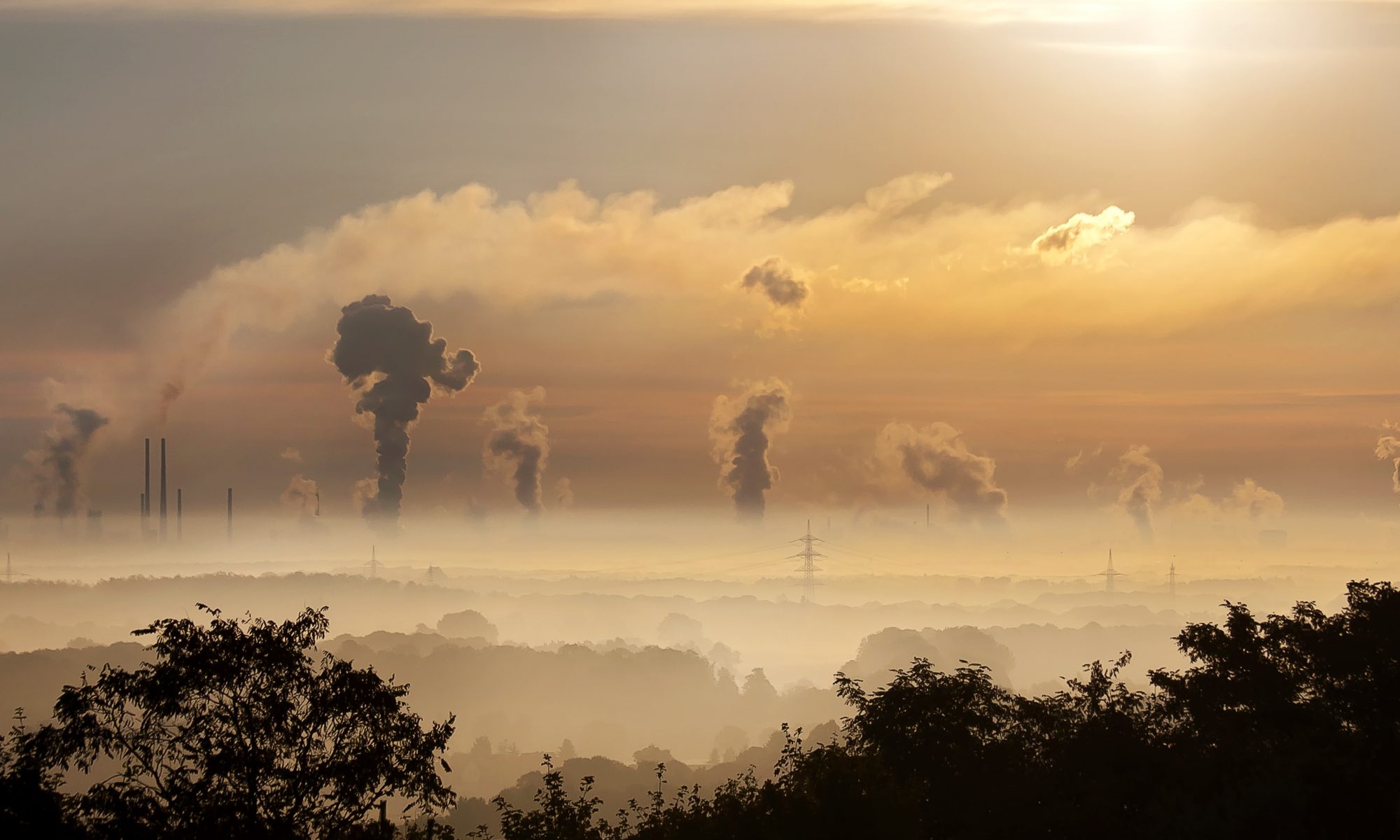
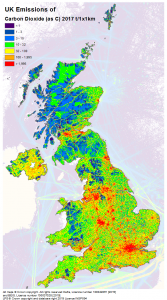
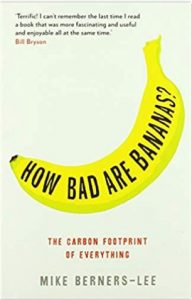 – a text message, a web search and an email all have a carbon footprint;
– a text message, a web search and an email all have a carbon footprint;